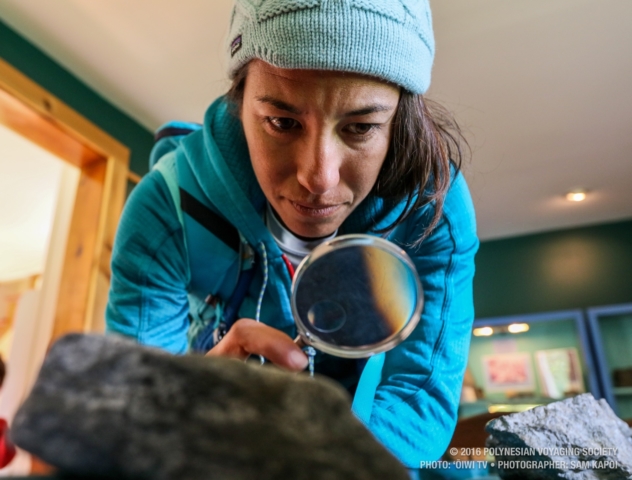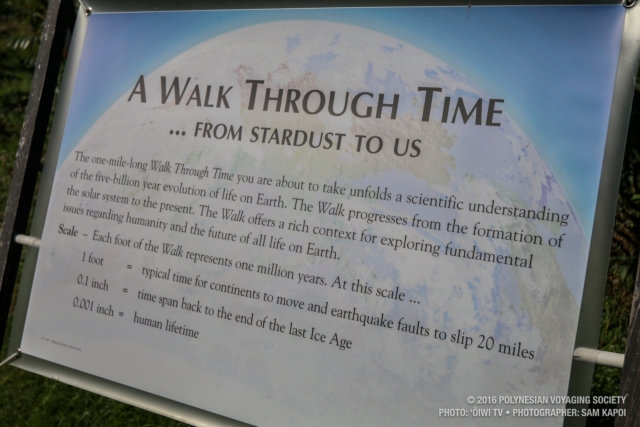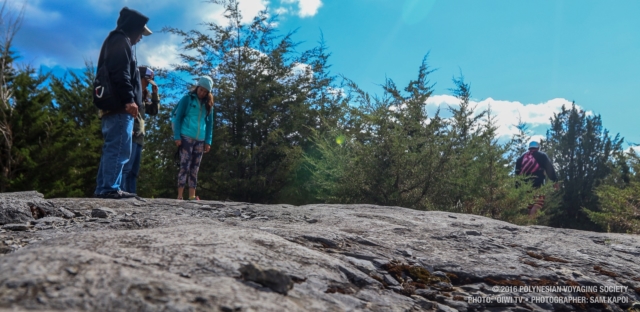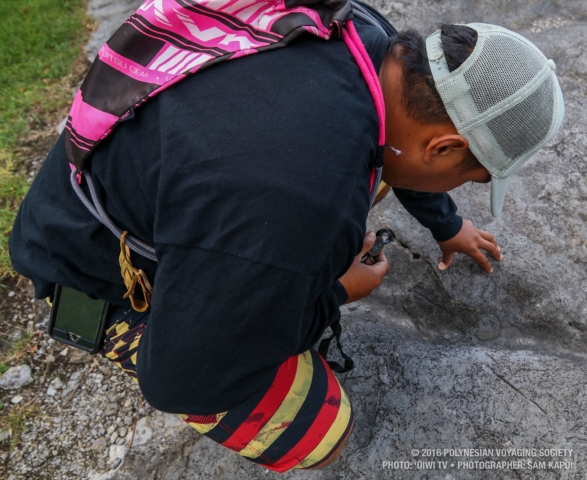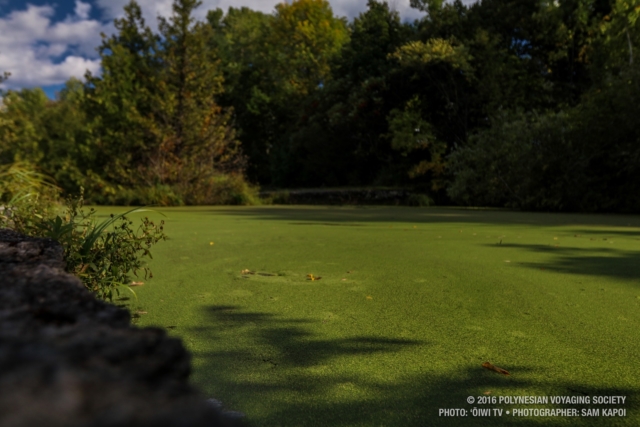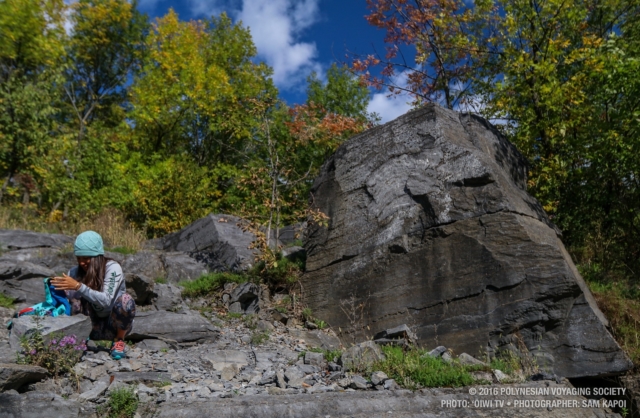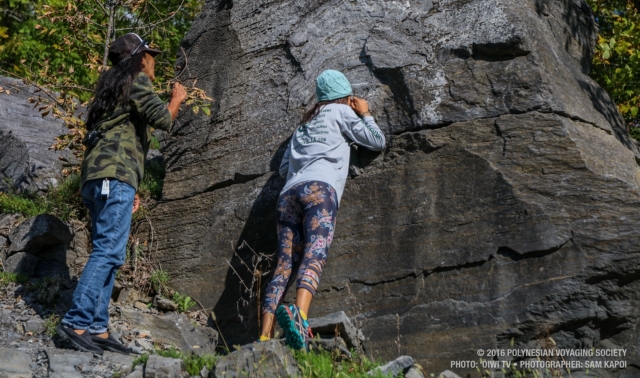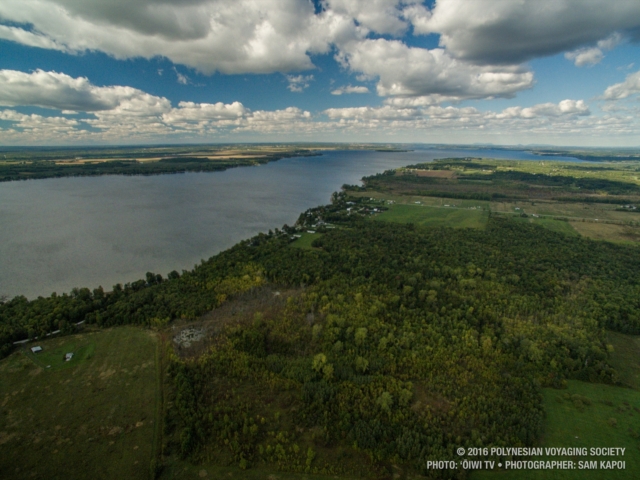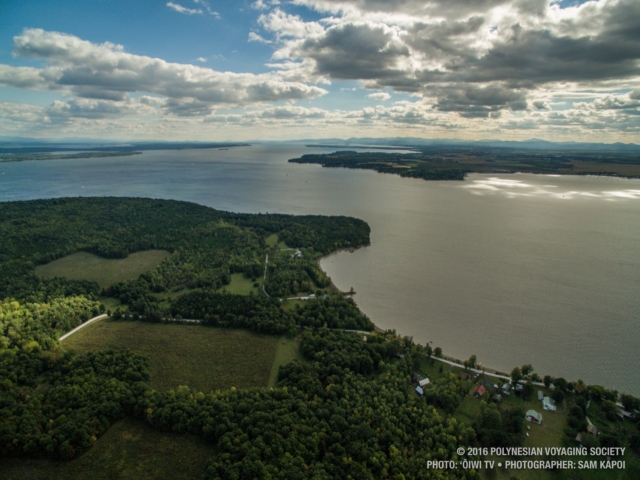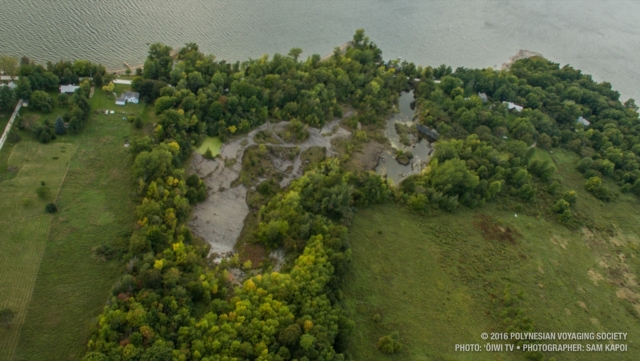
Crew Blog | Haunani Kane: Chazy Reef
- Posted on 27 Sep 2016
- In Crew Blogs, Newsletter, Photo Galleries, Science, Teachers
 Written by Haunani Kane
Written by Haunani KaneAs young ʻōiwi in this modern world, we are students in the traditional sense of our professors or mentors at the University. But we are also entrusted with the privilege and responsibility to learn from other great cultures and places across the world. Our kāpena (captain), Kālepa Baybayan, reminded us on this leg of the Worldwide Voyage that we as Hawaiians are amongst some of the youngest cultures on Earth. We have spent nearly a month traveling through lakes and rivers that were slowly unveiled as large masses of ice retreated thousands of years ago following the last Ice Age. The first people of this ʻāina like the Mohawk Nation used these same waterways for trade, transportation, and a source of food and medicinal resources.

We’ve also visited one of the oldest and most diverse fossil reefs in the world, which is found surprisingly on a small island in Lake Champlain, Vermont, further emphasizing that we as humans are just “a blink of an eye” when considering the age of not only mother Earth but all of the future generations of life that have yet to call these places home. On this Worldwide Voyage, Hōkūleʻa has visited both the largest modern living organism – the Great Barrier Reef – and the oldest fossil reef.

Approximately 480 million years ago when the Chazy Reef formed, the world was much different than what it is now. The Iapetus Ocean existed between 400-600 million years before present.The reef formed just south of the equator in the tropical Iapetus Sea during a time when CO2 levels were 10-15 times higher than present, sea-level was elevated, and there was very little ice or life on land. The majority of life during this time was found in the ocean, and as a result the Chazy Reef is believed to have established a diverse environment encompassing over 1,000 miles.In comparison, Australia’s Great Barrier Reef is approximately 1,400 miles. Over time the Chazy Reef migrated north as continents and ocean basins changed shape and size, eventually giving birth to the Atlantic Ocean and the North American continent.
It was completely mind blowing to see some of the first ancestors of the reefs we have back home in Hawaiʻi and encouraging to know that despite all of the changes the world has gone through, important remnants of the past continue to persist through time.
Help fund the Voyage as we sail the East Coast
Hōkūle‘a’s visit to the eastern United States is a historic milestone in her 40 years of voyaging.
Celebrate with us by pledging your support to the Mālama Honua Worldwide Voyage.






